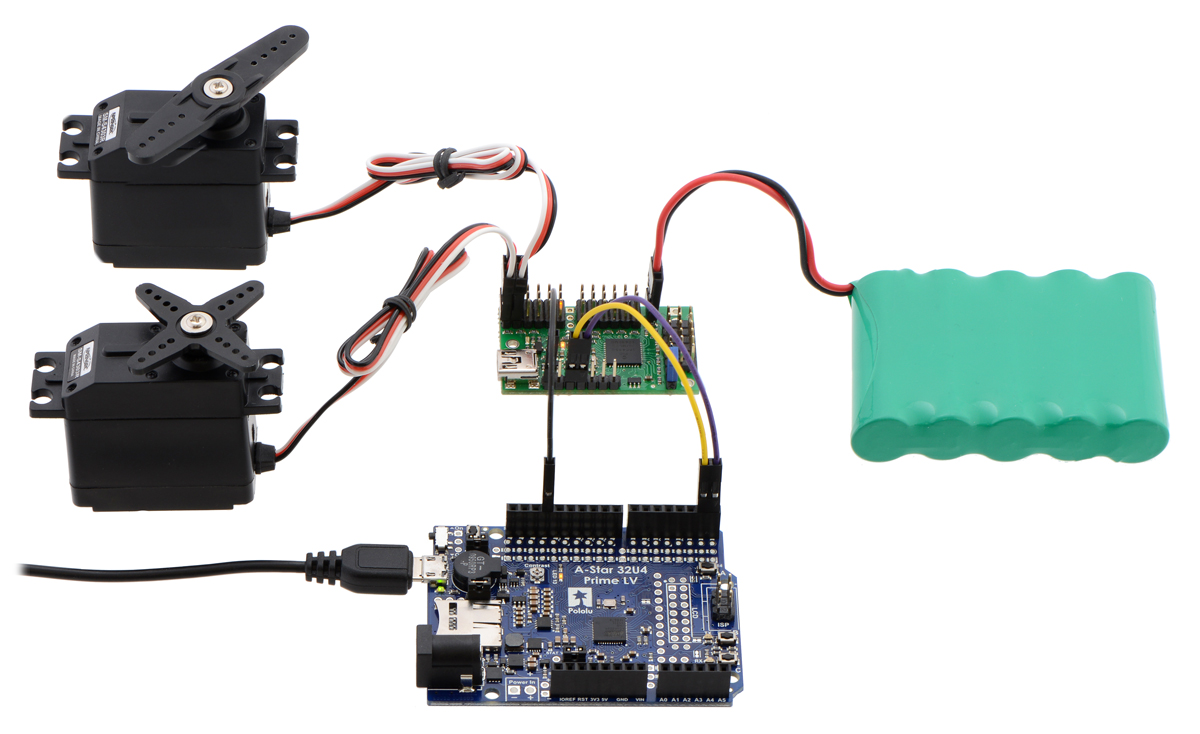2018-8-22 After including the 'Stepper' library, the four control pins 'in1' to 'in4' are defined. To tell the Arduino Stepper library which pins are connected to the motor controller, the following command is used: The Stepper library is included in newer distributions of the Arduino IDE - you may need to upgrade. /* Adafruit Arduino - Lesson 16.
The Driver provides five different step resolutions: full-step, haft-step, quarter-step, eight-step and sixteenth-step. Also, it has a potentiometer for adjusting the current output, over-temperature thermal shutdown and crossover-current protection.
Its logic voltage is from 3 to 5.5 V and the maximum current per phase is 2A if good addition cooling is provided or 1A continuous current per phase without heat sink or cooling. A4988 Stepper Driver Pinout Now let’s close look at the pinout of the driver and hook it up with the stepper motor and the controller.
If you’re not able to peek behind the TV then you might have to remove the TV from the mount to find what you are after. Some of you reading this may have your TVs wall mounted. Vizio serial number search. If you are not able to find the serial or model on the TV screen then you can find all this information and more on the back of the TV.
So we will start with the 2 pins on the button right side for powering the driver, the VDD and Ground pins that we need to connect them to a power supply of 3 to 5.5 V and in our case that will be our controller, the Arduino Board which will provide 5 V. The following 4 pins are for connecting the motor. The 1A and 1B pins will be connected to one coil of the motor and the 2A and 2B pins to the other coil of the motor. For powering the motor we use the next 2 pins, Ground and VMOT that we need to connect them to Power Supply from 8 to 35 V and also we need to use decoupling capacitor with at least 47 µF for protecting the driver board from voltage spikes. The next two 2 pins, Step and Direction are the pins that we actually use for controlling the motor movements.
The Direction pin controls the rotation direction of the motor and we need to connect it to one of the digital pins on our microcontroller, or in our case I will connect it to the pin number 4 of my Arduino Board. With the Step pin we control the mirosteps of the motor and with each pulse sent to this pin the motor moves one step. So that means that we don’t need any complex programming, phase sequence tables, frequency control lines and so on, because the built-in translator of the A4988 Driver takes care of everything. Here we also need to mention that these 2 pins are not pulled to any voltage internally, so we should not leave them floating in our program. Next is the SLEEP Pin and a logic low puts the board in sleep mode for minimizing power consumption when the motor is not in use. Next, the RESET pin sets the translator to a predefined Home state.

This Home state or Home Microstep Position can be seen from these Figures from the A4988 Datasheet. So these are the initial positions from where the motor starts and they are different depending on the microstep resolution. If the input state to this pin is a logic low all the STEP inputs will be ignored. The Reset pin is a floating pin so if we don’t have intention of controlling it with in our program we need to connect it to the SLEEP pin in order to bring it high and enable the board. The next 3 pins (MS1, MS2 and MS3) are for selecting one of the five step resolutions according to the above truth table. These pins have internal pull-down resistors so if we leave them disconnected, the board will operate in full step mode. The last one, the ENABLE pin is used for turning on or off the FET outputs.
So a logic high will keep the outputs disabled. Real lives 2007 free full download. Components needed for this Arduino Tutorial You can get the components from any of the sites below: • Stepper Motor (NEMA17).

/ • A4988 Stepper Driver. / • 12V 2A Adapter. / • Power Jack / • Arduino Board / • Breadboard and Jump Wires. / *Please note: These are affiliate links. I may make a commission if you buy the components through these links.
I would appreciate your support in this way! Circuit Schematics Here’s the complete circuit schematics. I will use the drive in Full Step Mode so I will leave the 3 MS pins disconnected and just connect the Direction and the Step pins of the drive to the pins number 3 and 4 on the Arduino Board and as well the Ground and the 5 V pins for powering the board. Also I will use a 100µF capacitor for decoupling and 12V, 1.5A adapter for powering the motor. I will use a NEMA 17 bipolar Stepper Motor and its wires A and C will be connected to the pins 1A and 1B and the B and D wires to the 2A and 2B pins. Current Limiting Before we connect the motor we should adjust the current limiting of the driver so that we are sure that the current is within the current limits of the motor.

